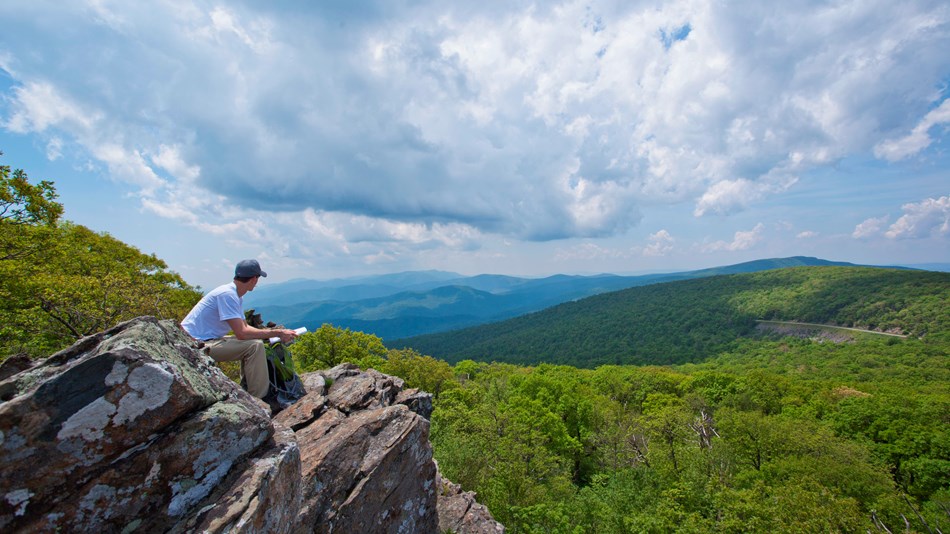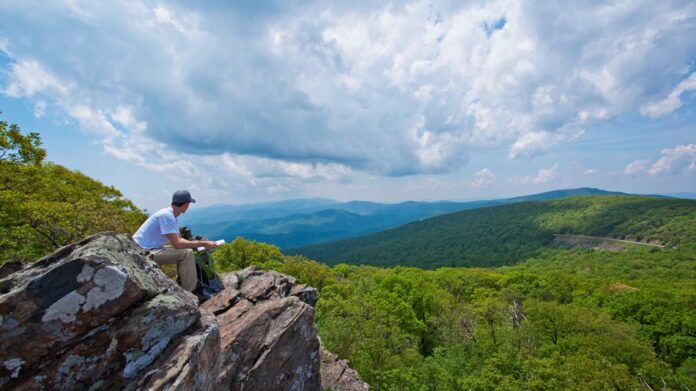 A new National Park Service (NPS) report shows that nearly 27 million visitors to national parks in Virginia spent $1,069,800,000 in the state in 2016. That spending resulted in 16,795 jobs and had a cumulative benefit to the state economy of $1,456,000,000.
A new National Park Service (NPS) report shows that nearly 27 million visitors to national parks in Virginia spent $1,069,800,000 in the state in 2016. That spending resulted in 16,795 jobs and had a cumulative benefit to the state economy of $1,456,000,000.
“The national parks of the state of Virginia attract visitors from across the street and across the world,” said NPS Northeast Region Acting Director Joshua Laird. “Whether seeking nature or culture, adventure or respite, people from all walks of life travel to national parks for great experiences and spend money along the way. This new report shows that investing in the National Park Service yields big returns for both local and national economies, with every dollar spent on NPS sites bringing $10 in revenue. National Parks are job creators here in Virginia and across the nation.”
There are 17 National Park Service sites located entirely or partially within the state of Virginia which were included in the report. (National Scenic or Historic Trails, National Heritage Areas and Corridors, affiliated areas and similar entities are not included.) They are:
-
Appomattox Court House National Historical Park (Appomattox)
-
Arlington House, The Robert E. Lee Memorial (Arlington)
-
Assateague Island National Seashore (Virginia and Maryland)
-
Blue Ridge Parkway (Virginia and North Carolina)
-
Booker T. Washington National Monument (Hardy)
-
Colonial National Historical Park (Jamestown and Yorktown)
-
Cumberland Gap National Historical Park (Virginia, Kentucky and Tennessee)
-
Fredericksburg and Spotsylvania National Military Park (Fredericksburg)
-
George Washington Memorial Parkway (Virginia, Maryland, District of Columbia)
-
George Washington Birthplace National Monument (Westmoreland County)
-
Maggie L. Walker National Historic Site (Richmond)
-
Manassas National Battlefield Park (Manassas)
-
Petersburg National Battlefield (Petersburg)
-
Prince William Forest Park (Triangle)
-
Richmond National Battlefield Park (Richmond)
-
Shenandoah National Park (Luray)
-
Wolf Trap National Park for the Performing Arts (Vienna)
The peer-reviewed visitor spending analysis was conducted by economists Catherine Cullinane Thomas of the U.S. Geological Survey and Lynne Koontz of the National Park Service. The report shows $18.4 billion of direct spending by 331 million park visitors in communities within 60 miles of a national park. This spending supported 318,000 jobs nationally; 271,544,000 of those jobs are found in these gateway communities. The cumulative benefit to the U.S. economy was $ 34.9 billion.
According to the 2016 report, most park visitor spending was for lodging (31.2 percent) followed by food and beverages (27.2 percent), gas and oil (11.7 percent), admissions and fees (10.2 percent), souvenirs and other expenses (9.7 percent), local transportation (7.4 percent), and camping fees (2.5 percent).
Report authors this year produced an interactive tool. Users can explore current year visitor spending, jobs, labor income, value added, and output effects by sector for national, state, and local economies. Users can also view year-by-year trend data. The interactive tool and report are available at the NPS Social Science Program webpage: https://www.nps.gov/subjects/socialscience/vse.htm.
The report includes information for visitor spending by park and by state.
To learn more about national parks in state name and how the National Park Service works with state name communities to help preserve local history, conserve the environment, and provide outdoor recreation, go to https://www.nps.gov/state/va/index.htm.


